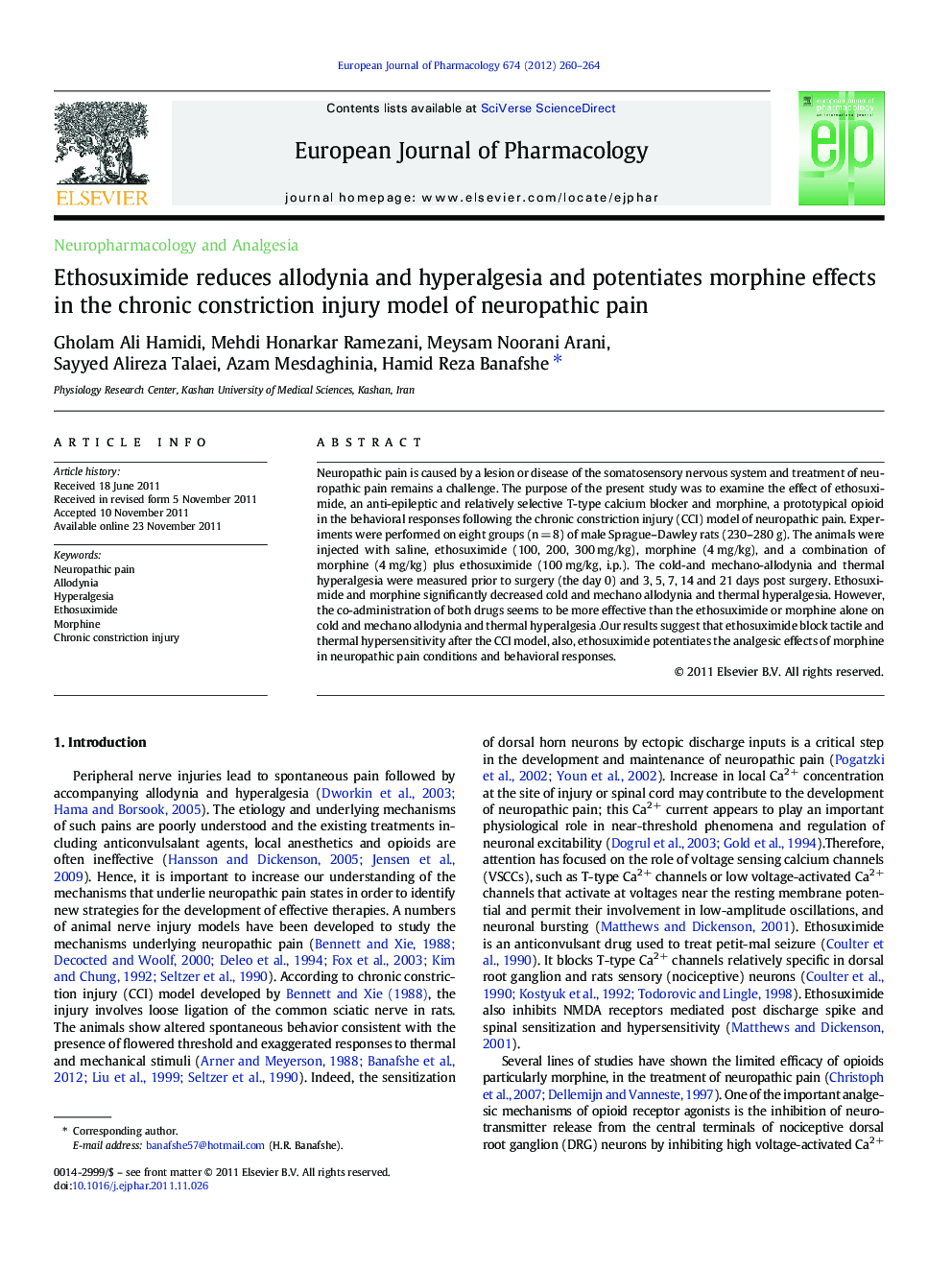| Article ID | Journal | Published Year | Pages | File Type |
|---|---|---|---|---|
| 5829846 | European Journal of Pharmacology | 2012 | 5 Pages |
Neuropathic pain is caused by a lesion or disease of the somatosensory nervous system and treatment of neuropathic pain remains a challenge. The purpose of the present study was to examine the effect of ethosuximide, an anti-epileptic and relatively selective T-type calcium blocker and morphine, a prototypical opioid in the behavioral responses following the chronic constriction injury (CCI) model of neuropathic pain. Experiments were performed on eight groups (n = 8) of male Sprague-Dawley rats (230-280 g). The animals were injected with saline, ethosuximide (100, 200, 300 mg/kg), morphine (4 mg/kg), and a combination of morphine (4 mg/kg) plus ethosuximide (100 mg/kg, i.p.). The cold-and mechano-allodynia and thermal hyperalgesia were measured prior to surgery (the day 0) and 3, 5, 7, 14 and 21 days post surgery. Ethosuximide and morphine significantly decreased cold and mechano allodynia and thermal hyperalgesia. However, the co-administration of both drugs seems to be more effective than the ethosuximide or morphine alone on cold and mechano allodynia and thermal hyperalgesia .Our results suggest that ethosuximide block tactile and thermal hypersensitivity after the CCI model, also, ethosuximide potentiates the analgesic effects of morphine in neuropathic pain conditions and behavioral responses.
